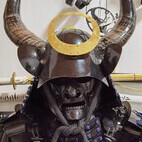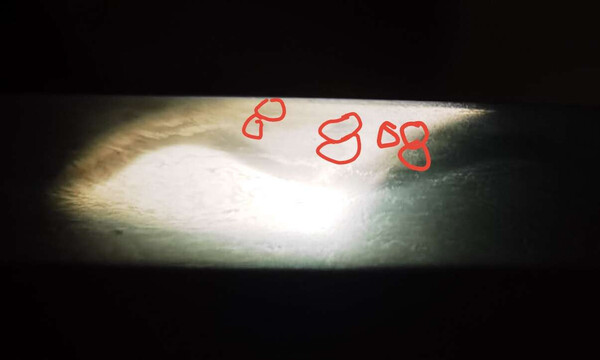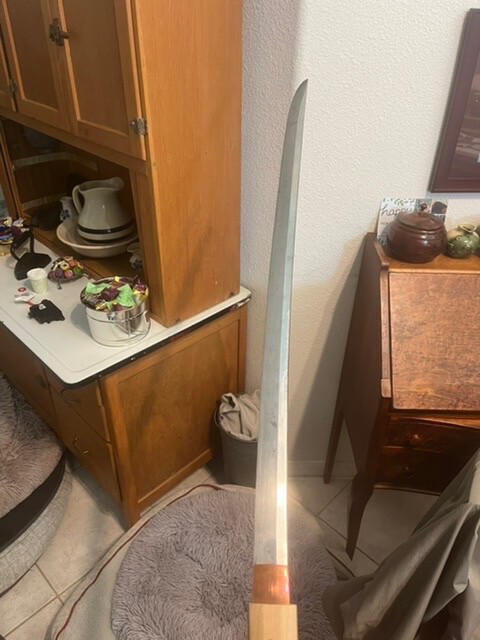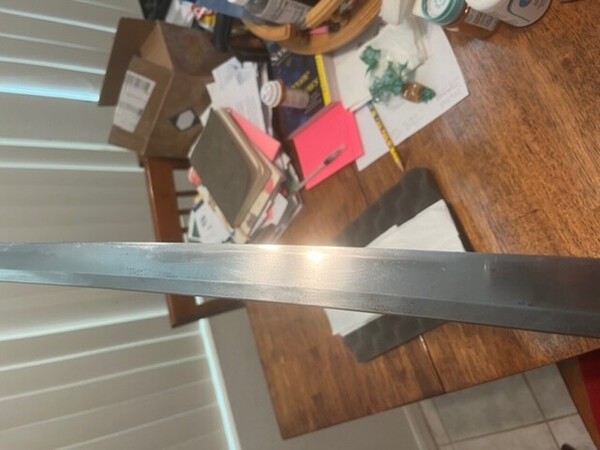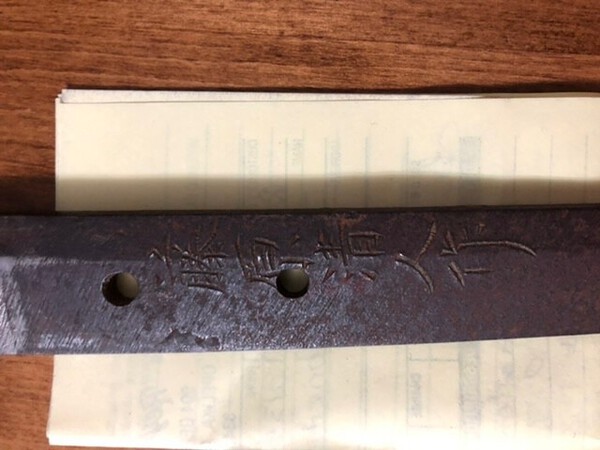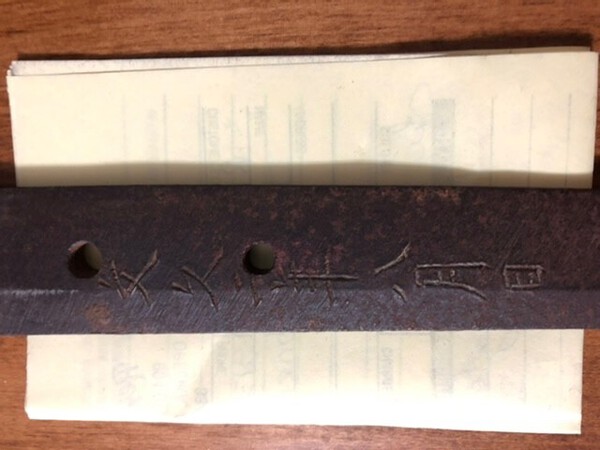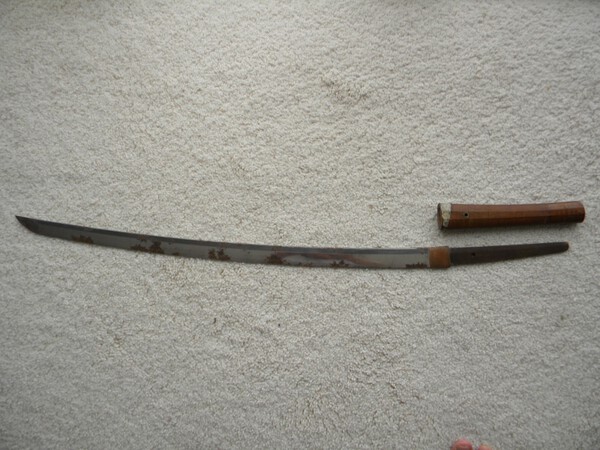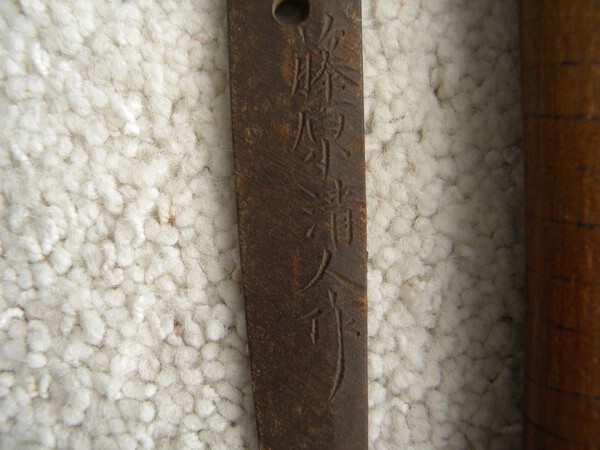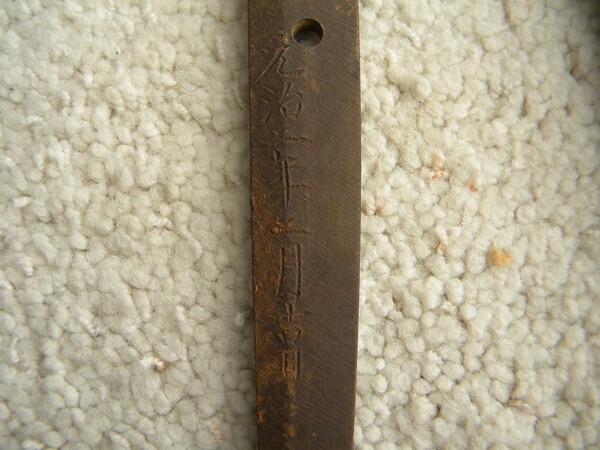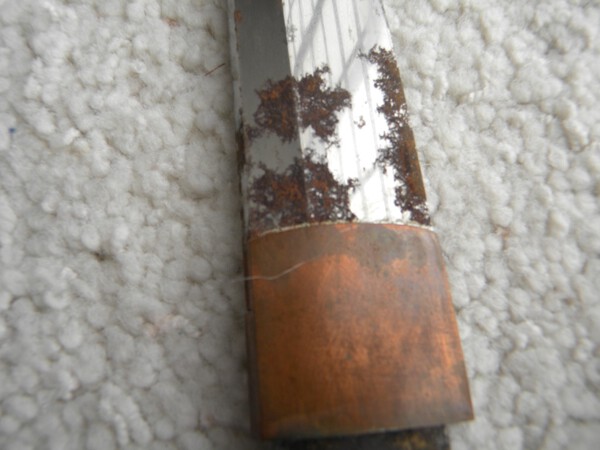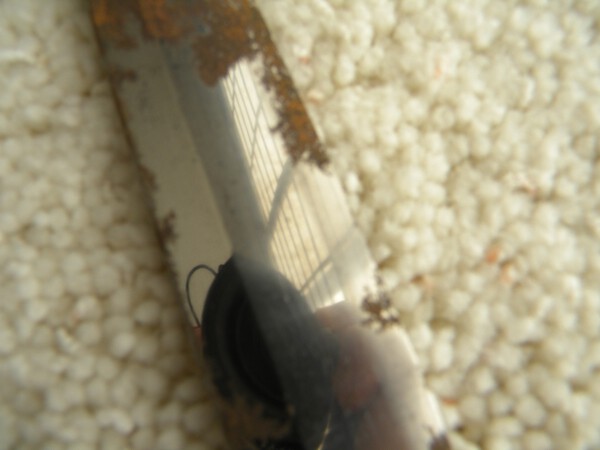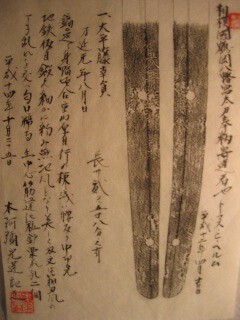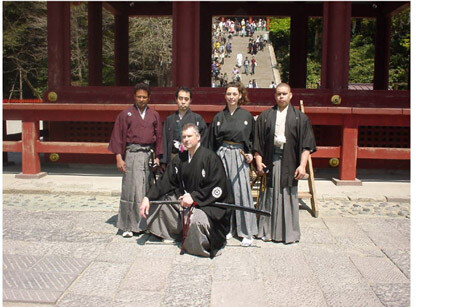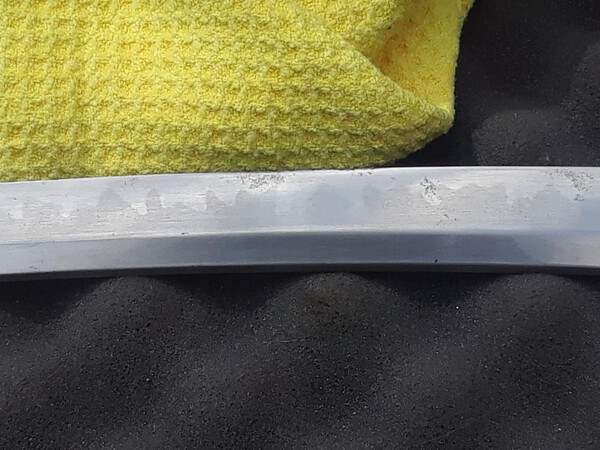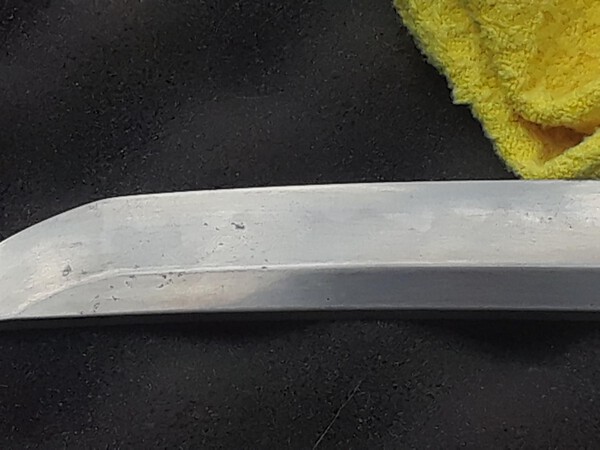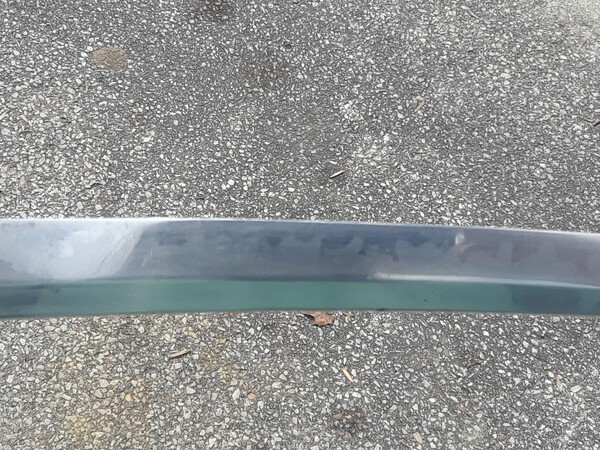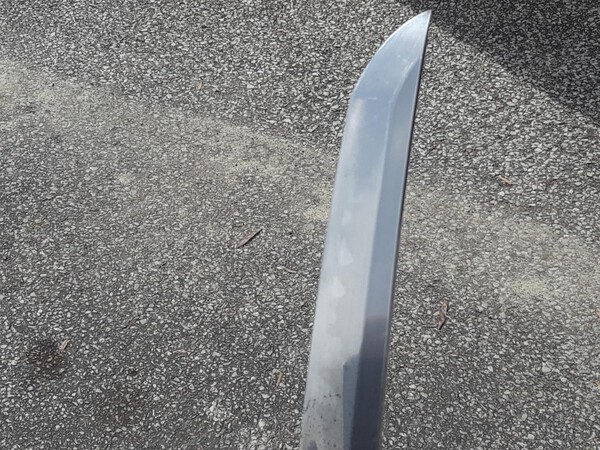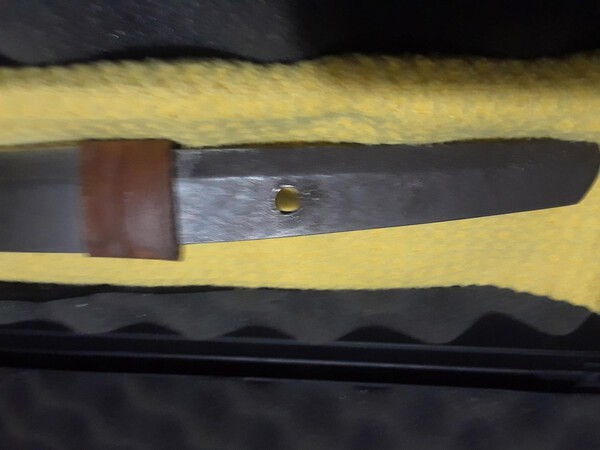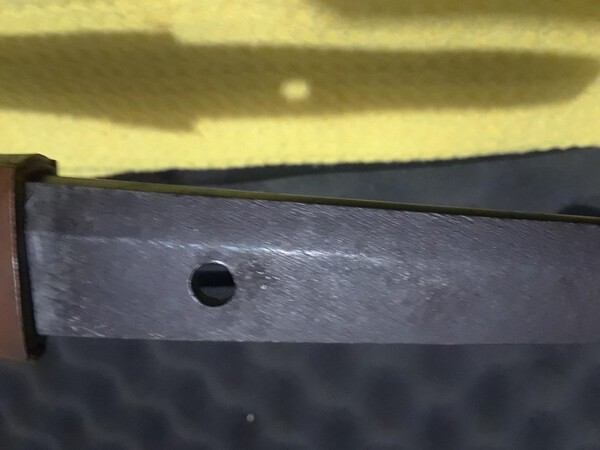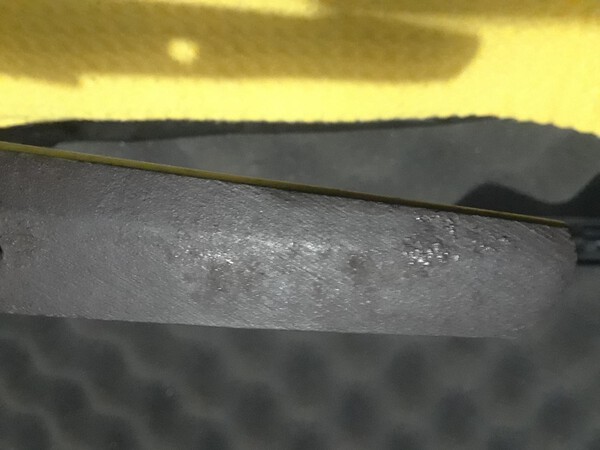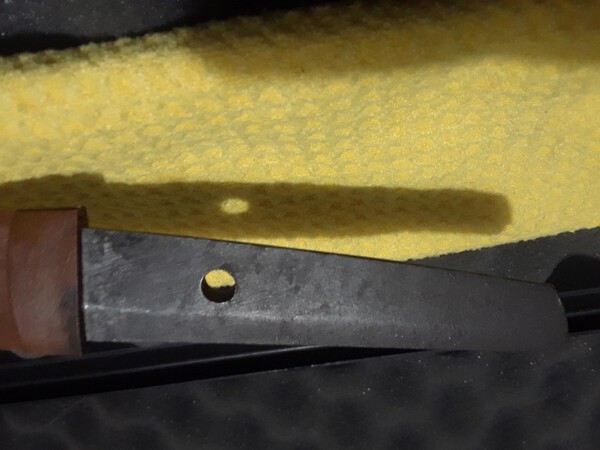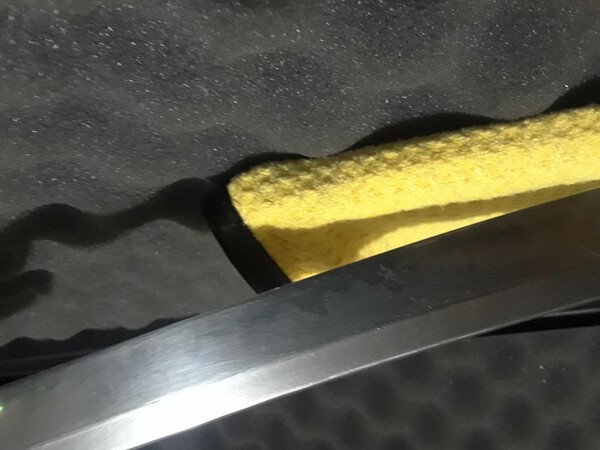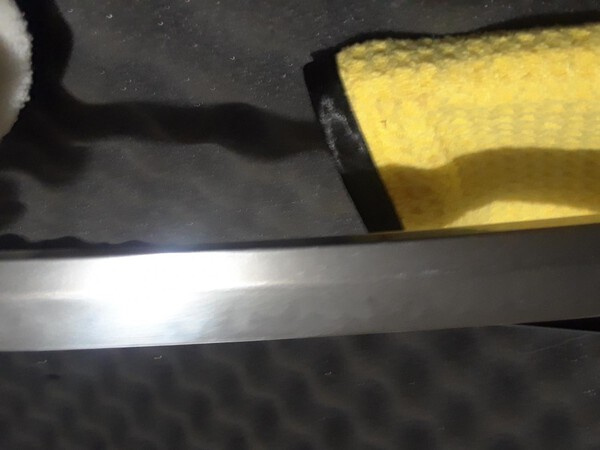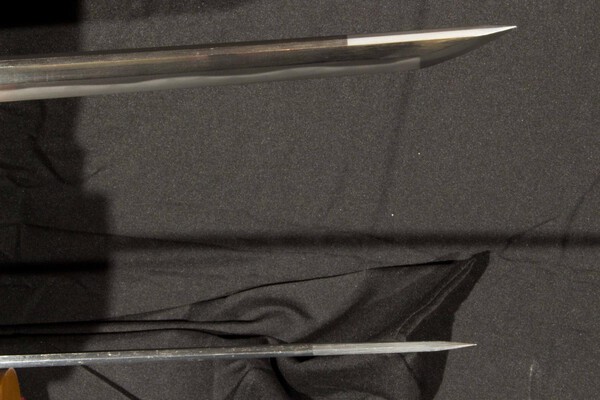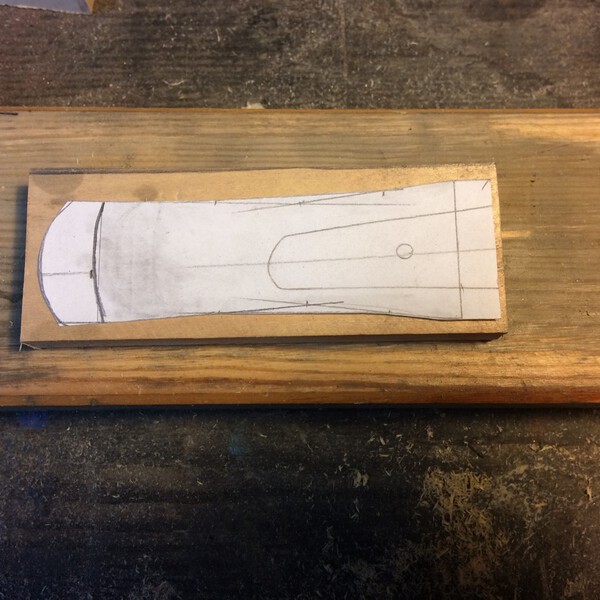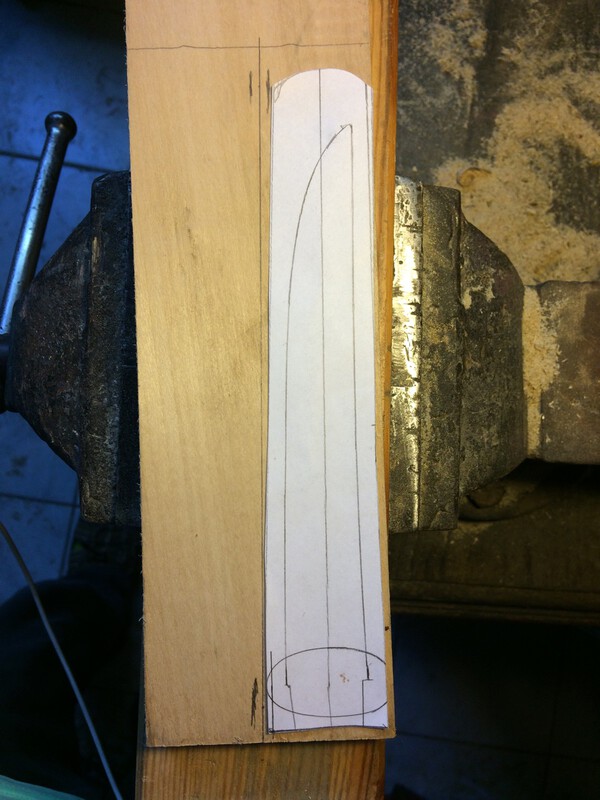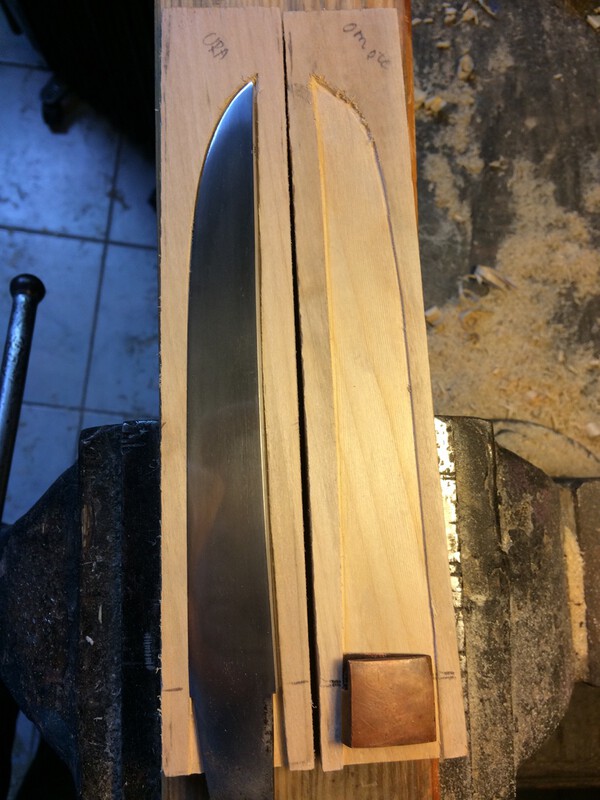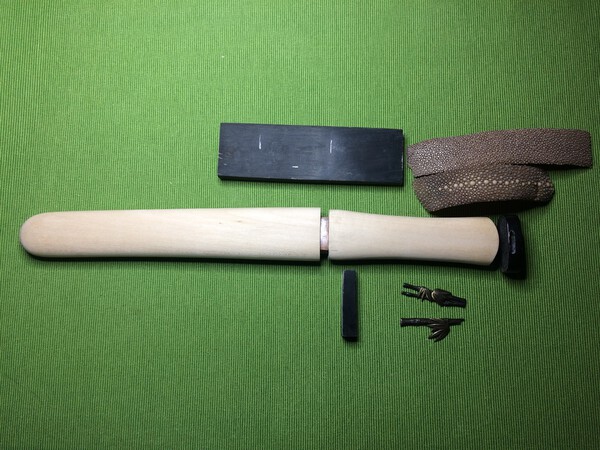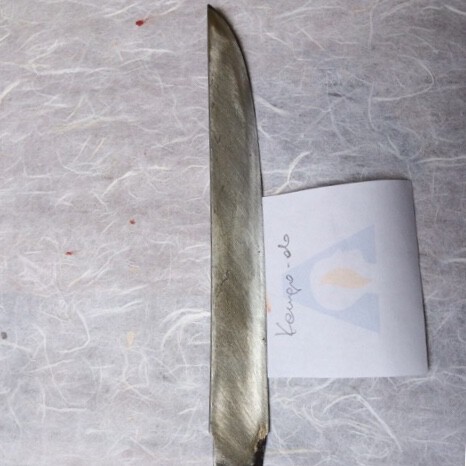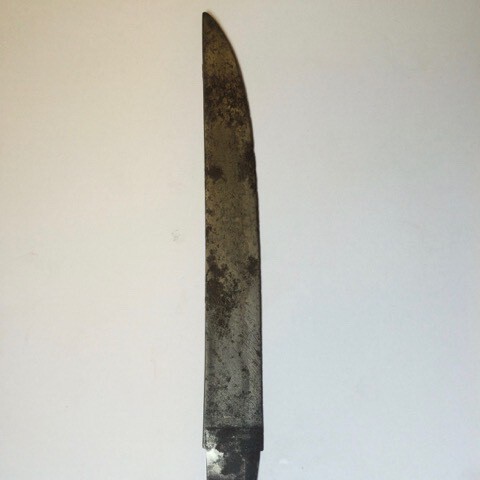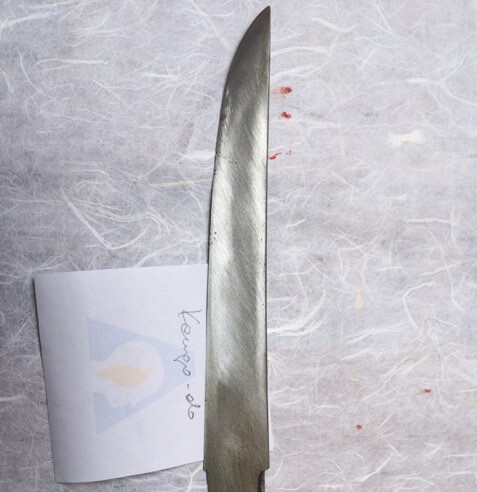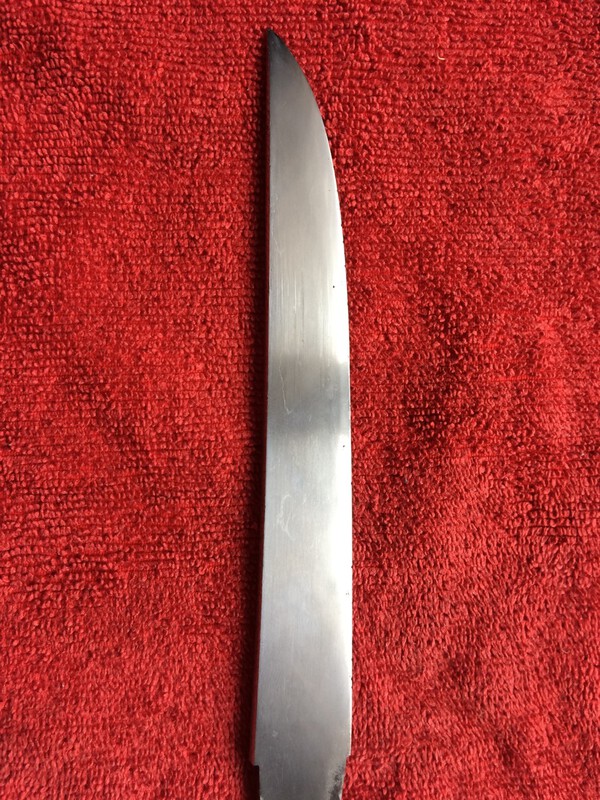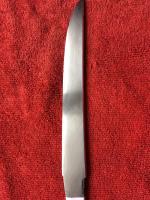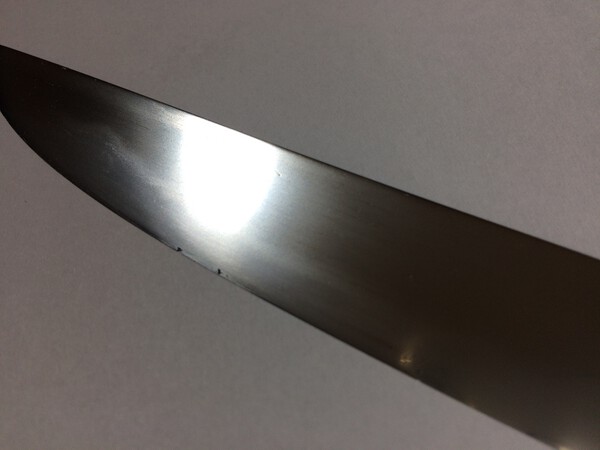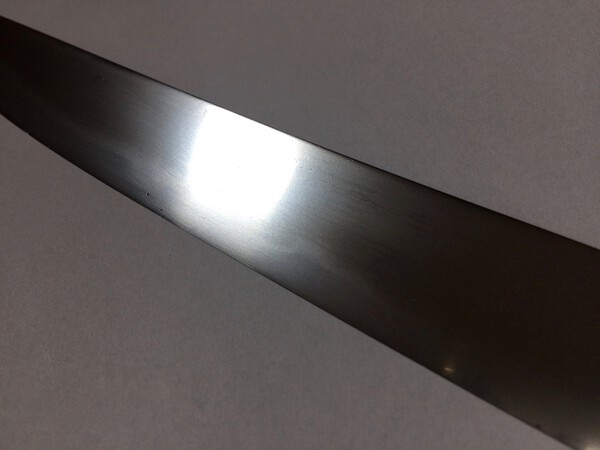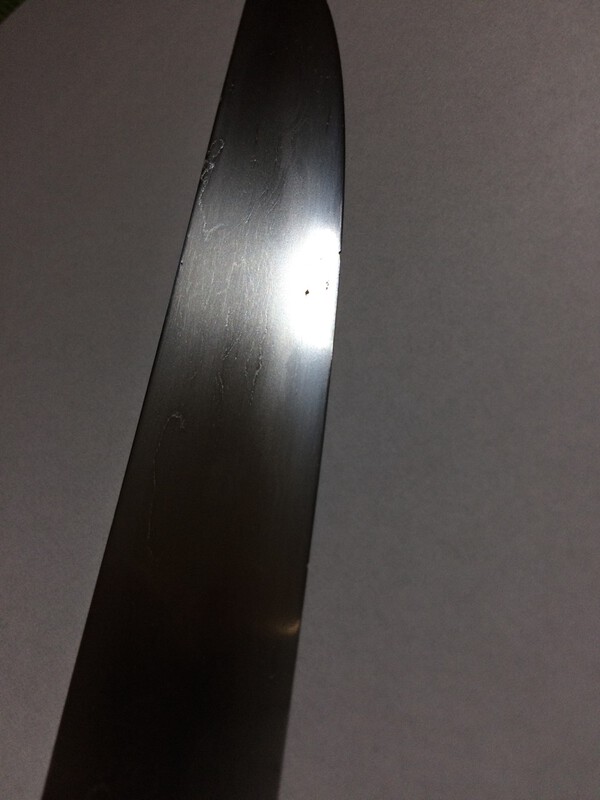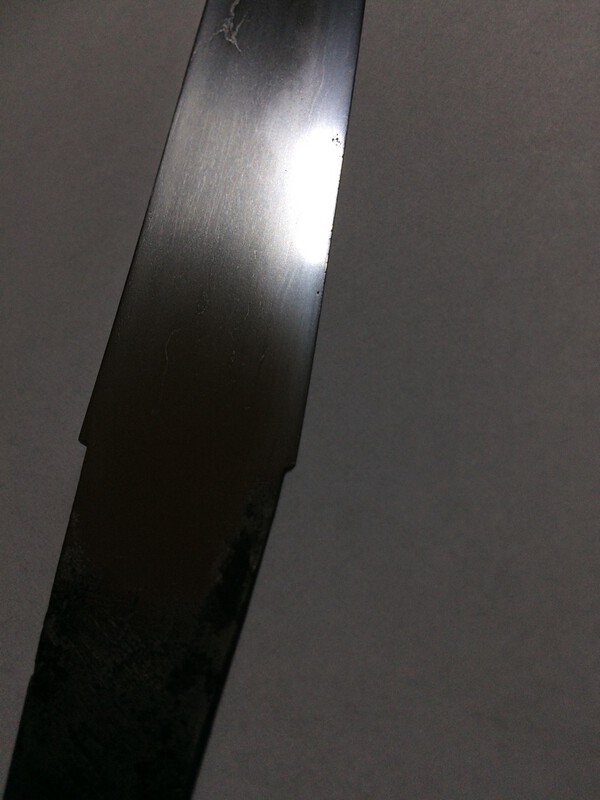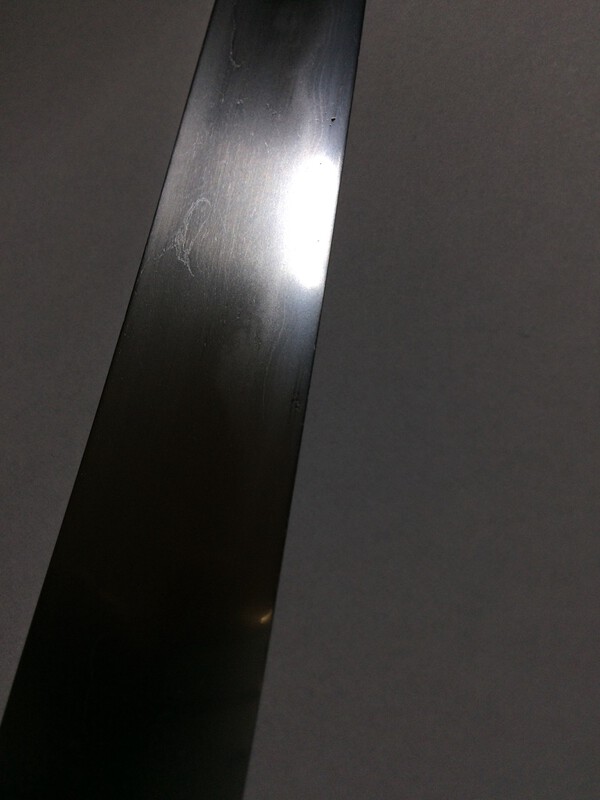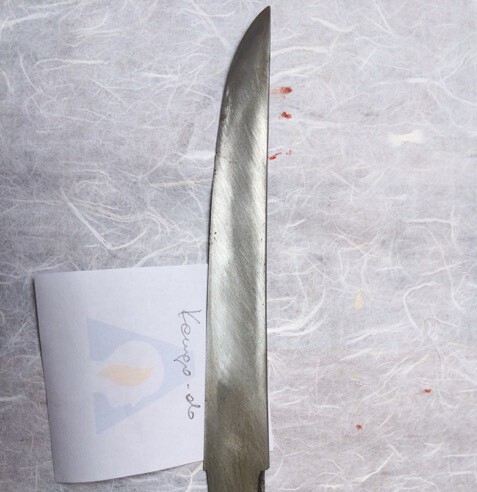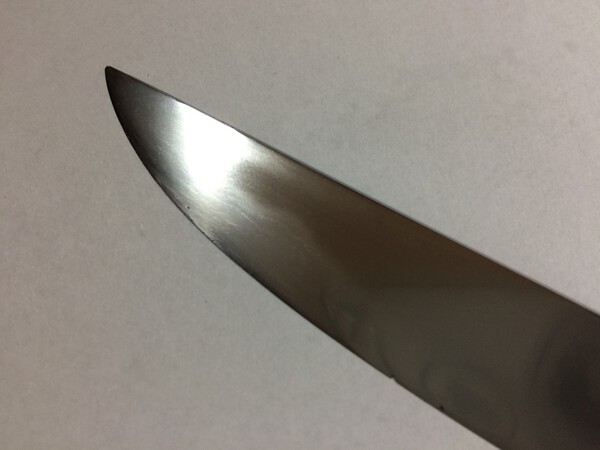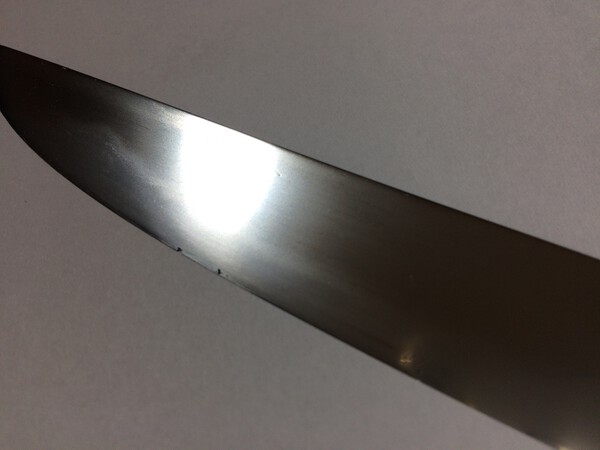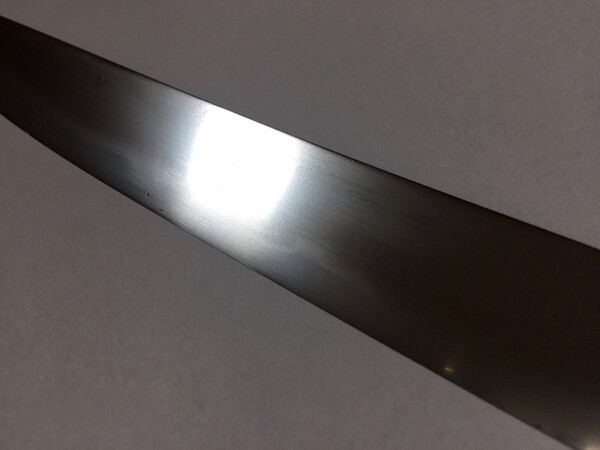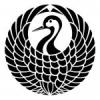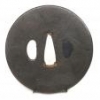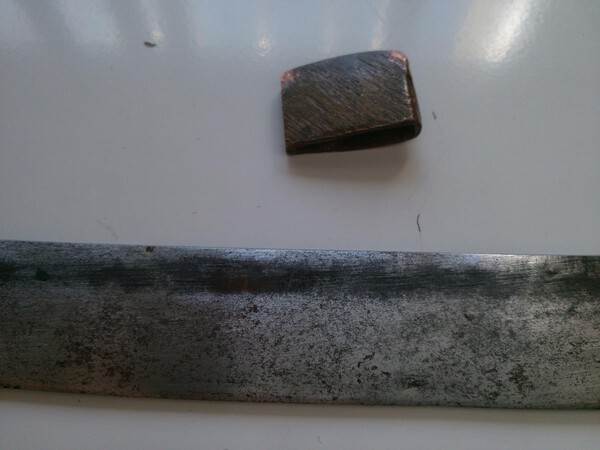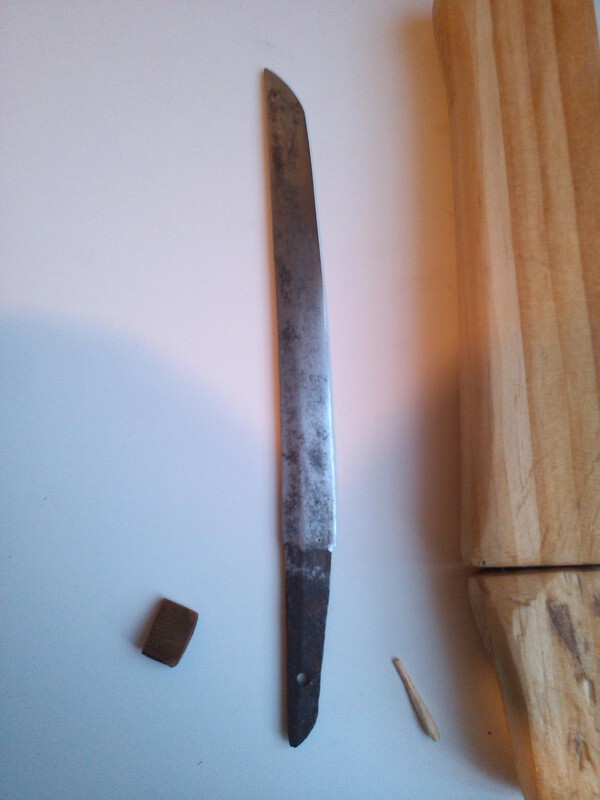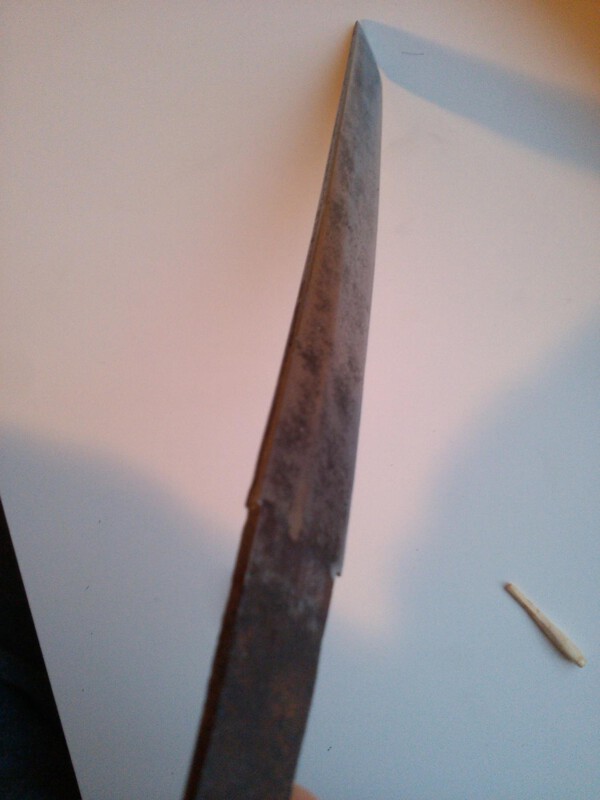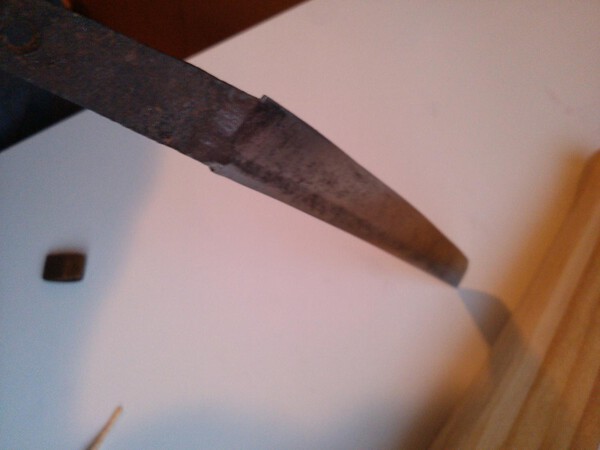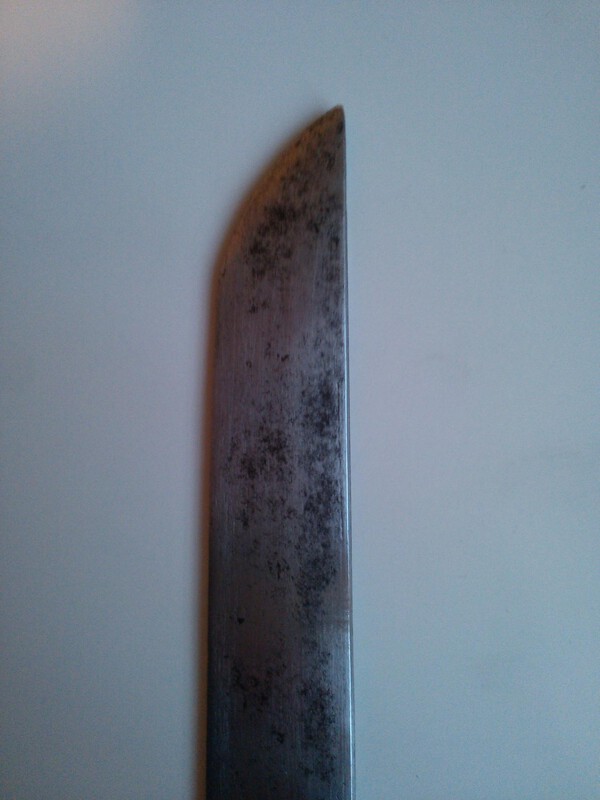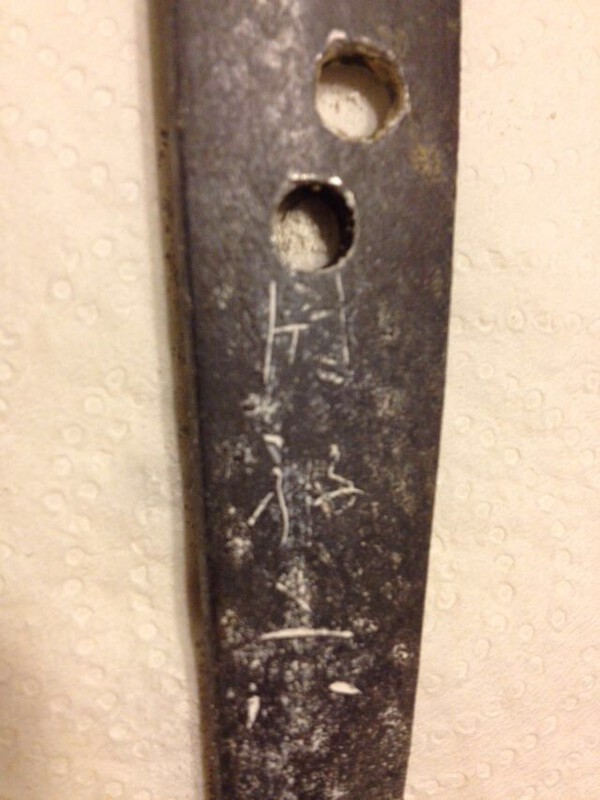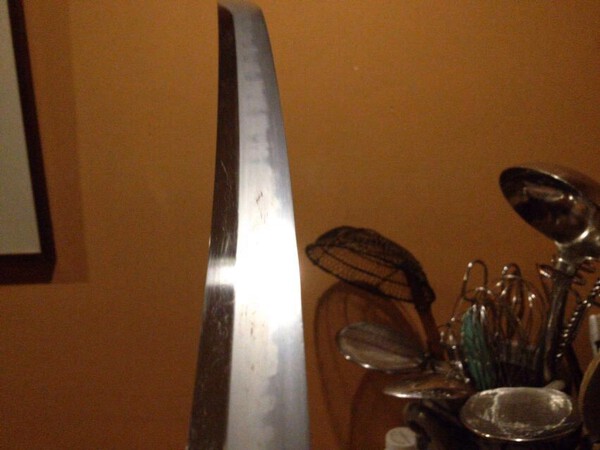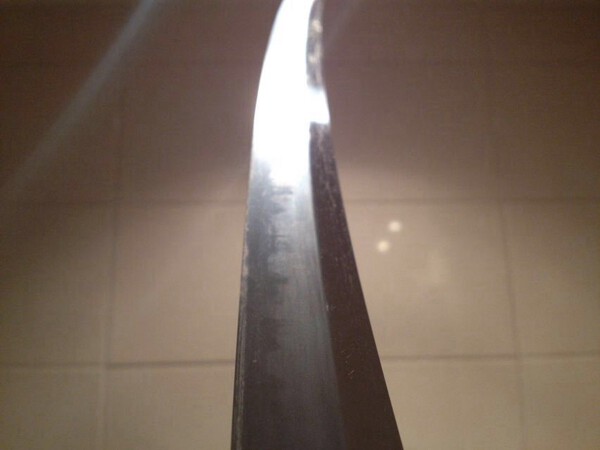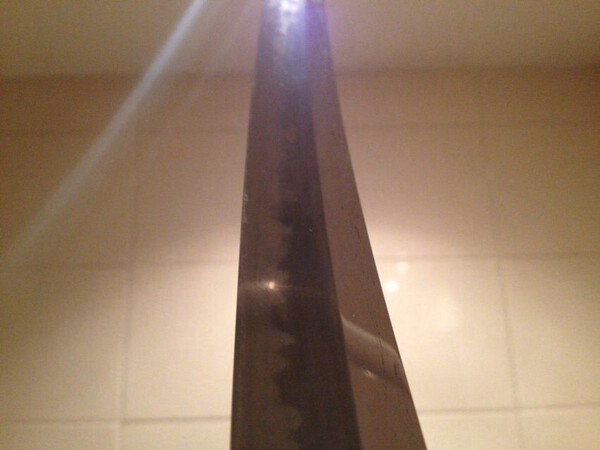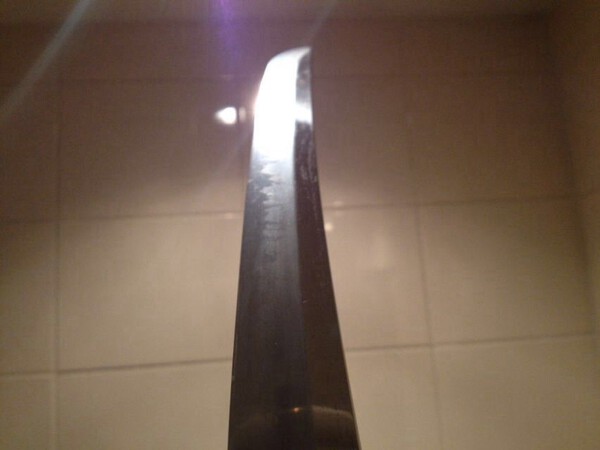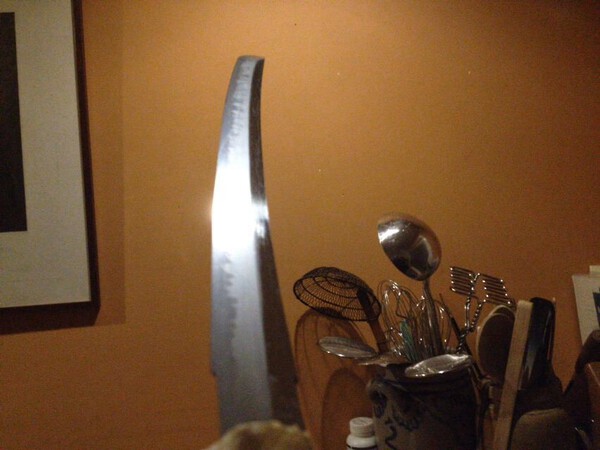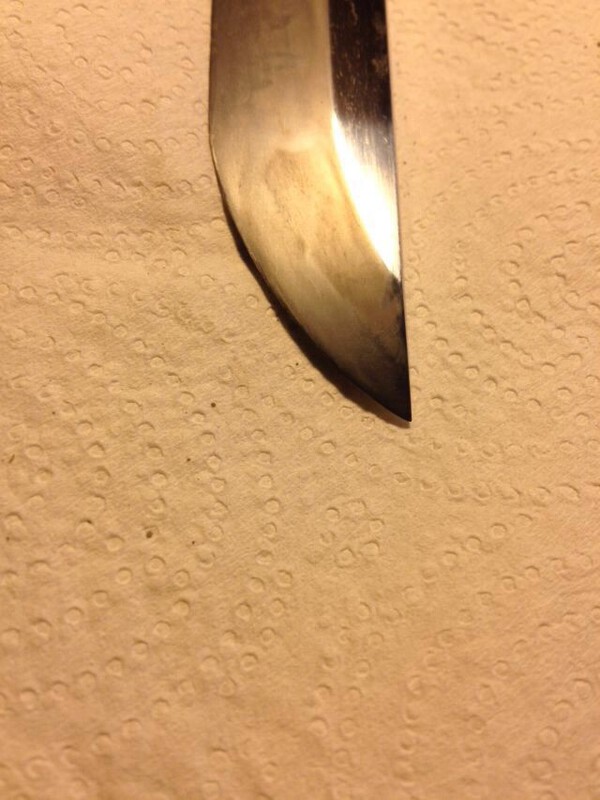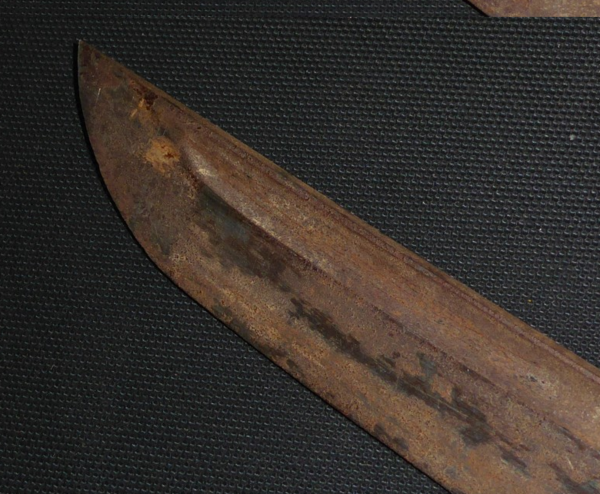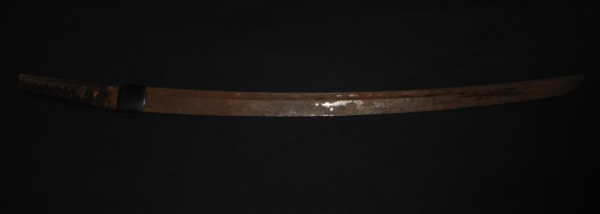Search the Community
Showing results for tags 'polishing'.
-
Recently at the advice of a friend with shared interest in the preservation of nihonto, I’ve tried and now implemented the use of 99% isopropyl alcohol in my sword care regimen. I’ve used it, rather than uchiko or anything so abrasive, to remove old oil at the start of a cleaning or before studying my blades. My test run was on a showato I posses, and with great result I have since implemented it for use with my nihonto. A partially saturated, folded tissue paper wiped gently across a sword does a fantastic and quick job of removing old oil and evaporating. A single follow-up wipe with dry tissue paper or a microfiber cloth ensures dryness and gets up any remaining bits. The blade is left perfectly cleaned, an unharmed. Everything in moderation, of course. Attached is a photo of my gendai Hizen-tō after such treatment. V/R, Jim
- 25 replies
-
- 3
-

-
This was just posted by Andrew Ickeringill ( @Andrew Ickeringill ) on Facebook, and I thought it was worth posting here, and pinning for the future. Andrew is a FULLY trained traditional polisher and one of the most qualified to make these statements. Before bringing up the subject on this forum, and risking a storm of fire, please read this and take it to heart. Amateur sword polishers… I know you probably won’t listen, but I’ll try anyway. Recently, I’ve been seeing more and more rubbish from amateur polishers on the internet, it’s not a new problem, but with social media being what it is, amateurs have been given a platform where they can prosper. It’s beyond frustrating, it’s infuriating, and it's working directly against what I'm striving for, the preservation of Nihonto. I’ve had to correct the damage caused by amateur polishers many times, and the damage is always severe. Correcting these hack-jobs takes a lot of work, and it means removing more steel than would’ve otherwise been necessary if the blade had previously gone to a traditionally-trained togishi. A traditional apprenticeship in togi takes years to complete for a reason, THERE’S A LOT TO LEARN! It means giving up everything else to spend your time in servitude to Nihonto. My apprenticeship was 12 hours a day / 7 days a week / for over 6 years, and even my spare time (what little I had) was usually spent studying nihonto. But if you want to be a togishi, this is the way it must be, you have to go all in. Through arrogance or ignorance or both, amateur polishers have completely forgone this necessary training. Some of them may have attended seminars in Japan, or visited a togishi for a few days… but this obviously doesn’t equate to traditional training. And for many amateurs, the bulk of their training consists of reading books and watching youtube videos of swords being ruined without a clue. Unfortunately, these videos receive plenty of misguided encouragement from those who don’t know any better… “wow, so shiny!”. Amateurs will often argue… “this sword isn’t worth sending to a pro, should we just leave it to rust?”… but how would THEY know? They haven’t been trained in kantei, they have no idea if a sword is worth a professional restoration or not. A cold chill passes up my spine every time I think about this, how many great swords have been ruined by amateurs? I know I’ve already seen a few in my time. If you’re an amateur polisher reading this, let me give you a tip… this job is not for you. This isn’t something that should be attempted by anyone but a traditionally trained togishi, and if you haven’t realised this fact by now, then you need to develop more respect for Nihonto and the craftsmen who have worked their butts off to complete the proper training. Please stop scraping the life away from these works of art, you’re doing far more damage than repair… this job is not for you!
-
Hi there, Ive got a fairly low quality Wakizashi that until recently had a pretty good shine, I probably should have oiled it, but now all of a sudden one side has gone fairly rusty. The sword is not worth enough to get a proper polish, is there any other way, or a guide to remove this surface rust easily? Any help is appreciated, Thanks
- 3 replies
-
- 1
-

-
- wakizashi
- restoration
-
(and 1 more)
Tagged with:
-
I have these weird circular spots appearing on my blade. they are only visible if the blade is bone dry. when i apply oil, they are invisible. originally i thought those are spots with dried oil, but nothing i did could remove them, now im a bit worried. what could these spots be? they appear in a pretty even pattern
-
Hello all, for my second post on NMB I’ll post my first sword, with a story and a question. A few years ago at an estate sale I stumbled upon a katana in very messed up gunto koshirae leaning against the wall of a shed. It was basically just the wood of the tsuka, two seppa and the metal saya. My grandmother’s maternal grandfather was a hatamoto, lineage of which she is quite proud, and she taught me various bits of what to look for and to do if I encountered nihonto. The sword is longer than the typical gunto with around a 29” nagasa, the nakago is signed Fujiwara Kiyondo, dated 1863. I left with it for pennies on the dollar, even at out-of-polish nihonto prices and had a shirasaya and habaki made for it immediately. I’ve attached some images below. It has spots of rust throughout, there are many small nicks in the cutting edge and the ububa remains. It has a magnificent o-kissaki, a somewhat shallow sori, and hints of an active suguha hamon are present. I understand that Kiyondo is a somewhat big name (excellent smith, student of Kiyomaro, etc.) and as such, am treating this sword as gimei until otherwise advised. My questions are, in this current condition, is polish feasible or is it too far gone? If polish is possible, (while my inclination is to do so,) would you pay the steep cost for what are basically entirely sentimental reasons? Finally, who are the better togishi in the greater United States area?
- 13 replies
-
- 1
-

-
- katana
- shin-shinto
-
(and 1 more)
Tagged with:
-
A question for the group. Pardon my ignorance, but what do you normally do with a kogatana in terms of polish and restoration? I most often see kogatana for sale in a fairly distressed condition with quite a lot of age and staining on the blade. I have a kogatana in a kozuka that I bought along with my sunnobi tanto to fill the empty space in the saya. I think that the pattern on the kozuka goes nicely with the rest of the koshirae. The blade is almost black. Is there any value at all in having something like this polished? It is signed "Hizen Kami Fujiwara Kuniyoshi" Using the forum's kaji pages, I think it is as follows in kanji: 肥 前 守 藤 原 国 (?) 吉 I know that mei on kogatana are most often false. Thanks for your input!
-
My Nisei dad and mom received this gift from her father when they were married in Japan after WW2. My grandfather was sensei and had his own kendo dojo. We lived in Japan for 2 years in the early 1960’s when my dad was stationed in Korea with the 25th infantry division. I was in junior high school at that time. We visited my grandfather during the summers and he came to visit us in Tokyo several times. The katana was kept at my uncle’s home in Hawaii down in their garage. What you see in the pictures is it’s condition after my dad retrieved it in the 1980’s. Termites destroyed the wood Saya and the Tsuka is what’s left. My mom is now 92 and we are thinking about what to do with the katana. I think we would like to try and bring it back to the condition it was; when it was gifted. We would like to find out how to do this and what it would cost. I believe we will keep the legacy in the family. Comments and any other thoughts would be appreciated. I am not well informed on these matters. We have two other katana. One that my dad won in a kendo tournament in Hawaii when he was in high school. Another that my dad brought back from the Philippines. He was stationed there in MIS under General MacArthur during WW2. These are still in excellent condition as they were always kept here. Thanks. - RayM
-
A Gift to Hachiman・or how NOT to conserve a sword “TSURUGAOKA HACHIMANGU ; Famous temple located at Kamakura, dedicated to the god of war-in 1103 Minamoto Yoriyoshi had erected a temple on Yui-ga-Hama, dedicated to Hachiman, the titular god of his family. Yoritomo transported it (1193) to Kamakura and erected it on the Tsurugaoka hill, where it may be seen to the present day. In 1219 the Shogun Sanetomo went there in great pomp to render thanks for his nomination to the dignity of udaijin. After the ceremony, on descending the steps, his nephew, Kugyo, assassinated him. In 1526 Satomi Yoshihiro, the governor of the province Awa plundered the treasures of the temple but Hojo Ujitsuna obliged him to retreat.- The temple of Tsurugaoka is one of the last remnants of the grandeur of Kamakura. Interesting souvenirs of the middle ages are kept in it.” - E. Papinot The layout of Kamakura today is dominated by Wakamiya Oji, the main street in town, which runs dead straight from the beach to the Tsurugaoka Hachimangu Shrine. It was built by the order of Yoritomo, when the Tsurugaoka Hachiman shrine was erected. Moto Hachiman, or the former Hachiman is not far from my house near Zaimokuza beach. There are three Torii that stand over the road to the shrine from Ni no Torii to Ichi no Torii, which stands at the entrance to the shrine grounds; there is a raised path, which is contained within sloping stone walls like a castle. There are cherry trees set all along this path: the Dankazura. It actually tapers down to about a half its width at the shrine end, but due to an engineered optical illusion, it does not appear so. It seems Yoritomo built everything in the town with an eye to warfare; an invading army might charge down this welcoming path four or five across only to find themselves fighting in space wide enough for only two or three. April is the time to don your kimono and stroll the Dankazura enjoying the cherries in bloom. Yoritomo built the Tsurugaoka Hachimangu in fulfillment of a promise he made at the Moto-Hachiman, “should I be successful in my campaign against the Taira, I will build the biggest Hachiman shrine Japan has ever seen right here in Kamakura”. As we all know, the first Shogun’s prayers were answered, and thereafter many people high and low made offerings in thanks for the favors bestowed upon them by the spirits of this beautiful place. For some four hundred years, the storehouse of the shrine collected treasure until in 1526, during the13th battle of Kamakura,・the aforementioned Satomi Yoshihiro caused the destruction of the temple. What wonderful things were lost, we might never know, but there are as yet interesting souvenirs of the middle ages kept here. Kobizen Masatsune tachi, Kokuho Bizen Nagamitsu tachi, Juyo Bunkazai Kuniyoshi tachi, Juyo Bunkazai Soshu Tsunahiro tachi, Kanagawa ken Juyo Bunkazai Tsunaie tachi, Kanagawa ken Juyo Bunkazai Hirokuni tachi, Kanagawa ken Juyo Bunkazai Kunimura, Senjuin, Chikuzen Nobukuni, and Muramasa, all number among the one hundred or so swords that are still in the storehouse of Hachimangu. Hojo Ujitsuna, the 8th, 9th, and 10th Tokugawa Shoguns and the Meiji Emperor are some of the more notable persons making offerings here. It is the ultimate in presumption to consider myself among their number, but the fact remains that late last year I, too determined to present a sword to the shrine. Last year, I retired my Iai-to and though I felt it didn’t need a polish, I decided to do my bit for the Japanese economy and have it polished and put it in a fresh shirasaya. Unfortunately, as sometimes happens, the kawagane proved too thin and the shingane was exposed during polish, to be expected perhaps with a Kamakura period tachi but the mark of death for a shinshinto blade which mine happened to be. I now had a considerable investment in a sword which had cost me too much already and there was certainly no way for me to recover any of the money spent. I resolved therefore to lovingly preserve it as it had near been a very part of my body daily for close to ten years. In the event of my passing on, on some long distant future day, it could be treasured in my family as an heirloom. Reflecting upon the loose hold my family now has on reality and the sheer lack of interest in things Japanese they exhibit, I began to have my doubts about future generations the more I thought about it. How then to conserve this blade in a way I could be reasonably assured it would not be mistreated in the future. As you must have guessed, I hit upon the brilliant idea of donating the sword to the Hachiman shrine. Owing to the poor condition of the blade, I felt it would surely be rejected by the priests. To my surprise Hon’Ami Koji Sensei, my iai teacher, a sword polisher and conservator of the Hachiman shrine sword collection was delighted with my idea. In fact he sat down and immediately started working on a schedule for the presentation. April, 2001 was determined to be the best time so we set things in motion to carry out our Ho-no-shiki or offertory ceremony. What sword you ask is worth all this. It is not at all special, I assure you. Signed OHIRA TO YUKISADA, Dated MANEN GANNEN HACHIGATSU HI. It is a 2 shaku 5 sun 8 bu katana with chu kissaki, shallow koshizori, tight tight itame hada and a rather wide choji midare hamon. The nakago is 27cm long with kurijiri and kattesagari yasurime with kesho yasuri. The gojimei is located in the shinogiji, midway between the mekugi-ana and the habaki moto. There are 2 mekugi-ana, one of which is a shinobi-ana, which was a popular addition in the Bakumatsu era. Ohira Yukisada or Yukikazu is listed as a Musashi area smith who worked around the time of the Meiji restoration or a little before. He styled himself Yu no shin・or bird of progress・ The To (藤) in the signature is also read Fuji・as in Fujiwara so this is an abbreviation. The year 1860, Manen gannen, started out with the assassination of the great elder II Naosuke, by a group of Mito ronin, angered by his policies of placating the foreign powers and punishing those who opposed him including the lord of Mito. The country was taking sides for a battle many were certain was soon to come, one has to wonder which side of the conflict this blade was destined for. This sword was originally purchased at the Great Western Gun Show, at the San Francisco Cow Palace sometime before 1983 for $700. At that time it was in shirasaya with late Edo/Meiji period copper habaki, iron tsuba, iron fuchikashira, a blue linen wrapped tsuka with white same and menuki which had been stripped by the owner prior to me. I bought it in 1987 in this condition. There is perhaps some justice in this sword finding peace back in Japan after the abuse it suffered in America. I immediately sanded down the shirasaya and painted it with green auto-lacquer. Then began the years of swinging, whacking and cutting. Over time I had a new saya made and rebuilt and rewrapped the handle. Now it has a new silver habaki, shirasaya and proper Japanese polish. On a gorgeous Saturday in April some thirty members of the Kamakura Iaido Kyokai and guests gathered at the Hachimangu Shrine. Dressed in formal montsuki and hakama We collected in the maeden, on the same stage that Shizuka Gozen stood upon as she plead for Yoshitsune’s life in song. We bowed before the priest where receiving his blessing we presented for all the gods and buddhas to see, the faithful sword which had seen me through three thousand days of determined practice. Following this, myself and two others had their new swords blessed in a ceremony known as Nyu-kon-shiki and here upon the stage practiced for the first time with those swords. The swords used in the ceremony to be invested with the true spirit of a samurai sword were tied with mizuhiki cord, after each was blessed an attendant handed the swords to Hon’Ami Sensei who then drew his Umetada Myoju tanto and cut the cord. After which each of us presented five kata or forms to the gods of the shrine. As I took the stage to perform my forms, in each corner sat a friend acting as guard against evil, the Shitenno. In the Northeast sat Iwamura Nobuhiro, who some of you have met, 6th dan Muso Jiki Den Eishin Ryu. To the Southeast from Brazil; Candido Roberto Nunez Sequiera, 3rd dan Toyama Ryu Batto-jutsu. To the Northwest from Sri Lanka, Siri Herath, 2nd dan Toyama Ryu Batto-jutsu and in the Southwest from France, Evelyne Sentenac, Shodan Muso Shinden Ryu. Thus all the parts of the globe were represented as I drew my sword and symbolically cut down evil with my newly christened blade. Following the ceremony there was a luncheon, where I was presented with a certificate acknowledging my gift and where I was asked to give a little speech. I thanked everyone and expressed my hope that the sword would reside within the shrine as a symbol of amity between San Francisco and Kamakura, between the U.S. and Japan and persons everywhere. So now this vet pick-up old beater iaito with Mike Virgadamo saya, Russ Axt handle and wrap, Fred Lohmen menuki, Cary Condell oshigata and lacquer job by yours truly, will join the other swords in the treasure house of the great Tsurugaoka Hachimangu where it will be lovingly cared for, for perhaps another 800 years carrying with it a tale of woe all too many swords know today, along with my sincere thanks for the life changing lessons it taught me during our brief journey together and of course the dear friends it has brought me to. @Kamakura in Japan, Thomas C Helm
- 7 replies
-
- 6
-

-

-
- katana
- restoration
-
(and 1 more)
Tagged with:
-
Hi everyone! I've just joined recently but I've been lurking about for about a month and have a few questions about polishing that I'd like to get others' points of view on. Feel free to add to/correct anything I have here, I've been admiring nihonto from afar for a long time now but only recently started actually learning about it, so it is what it is. First - everything I've been reading about polishing has an introduction that can be summarized as "don't you dare do it you're going to ruin EVERYTHING you absolute nincompoop", so I'm going into it with the expectation that no matter how careful I am, something will go wrong. Now that that's out the way - I've bought a few whetstones that are 3000/8000 grit and a nagura that's 8000 (assuming these are Japanese grit #s so I err on the safe side), and I have no intention of doing any reshaping. I know I can't be trusted with that, so it's going to be straight polishing to minimize risk. What I haven't done yet is buy the oil/supplies to finish it with. I've read Choji oil is what I need, but I'm wondering if there's a favored company to get it from, and what best to apply it with? Next, I have four blades total. Three of them are unmarked, unpolished (combat-polished?) "mystery swords" that I picked up fairly inexpensively (they may be awesome! they may be junk!), and one is a signed blade from WWII with the Seki blossom mark. Because I trust the guides and am assuming something will go wrong - and because I don't want to risk ruining one of the blades I bought to keep, be they trash or treasure - I'm tempted to buy a new blade. I was thinking of the cheaper, likely-machined WWII-era army/police swords that are always up on eBay for $200-$300 so that worst case I basically can't "ruin" it, and best case I make it a decent-looking sharpy-shiny and I have a chance of just reselling it and getting that money back. What does everyone think? I can't think of anything else to practice with that has naki, and I figure at least getting used the overall curved shape is better than nothing, but I'm very open to suggestions.
-
Hey everyone, Its been bright and sunny today, so I decided to go out and try my hand at photographing a new blade of mine with the limited camera and skills I have. I was able to capture its hamon very faintly, but of course the picture quality is low. However, I think I got enough to maybe see what you all think of it. The blade is a wakizashi coming in at a nagasa of 14 3/4" with 1/2" sori which seems pretty standard. However, what isn't standard is the rather wild hamon that goes all over the place. It is in a poor state of polish and fairly faint, but visible for most of the nagasa. I'll let the pictures do the rest of the talking. Opinions? Anyone have an idea of school, age, etc.? Again, my apologies for the poor camera quality!
-
I know a polish can be ruined from frequent drawing and sheathing, but does it ever fade out by itself? Thanks, James J
-
Greetings, Pictured are two Nihonto. As you can see, the polish on the mune at the kissaki has a "dull" or frosted finish that runs about 5 1/2 cm on the mune from the tip of the kissaki towards the mune-machi. What, if any, purpose does this have? The only thing I've heard is that this type of polish is for Tameshigiri to give a visual reference to be at the proper distance to the target. Any other ideas?
-
I bought a blade with habaki, so I need to make everything else myself. Koshirae: I decided to make aikuchi with buffalo horn fittings with flower motif
-
saved blade... sashikomi finishing. Blade was very rusty. I started my work with kongo-do Then I used next step stones after uchigumori-do I used hazuya and jizuya Send Your feedback, please.
- 1 reply
-
- restoration
- polishing
-
(and 1 more)
Tagged with:
-
Hello, I have two blades which would need a polish. But from commercial point of view, it makes no sense to ship to Japan. Therefore I want to ask you if somebody has ever dealt with Martin Hornak from Slovakia (http://www.nihontotogishi.com/). I found him on FB. Of course I am in contact with him via email and we are in discussion, but he is not responding on regulary basis my emails... Therefore I am not sure... On his HP he did not state to be traditional trained Togishi, but in email he said that this master is Joji Tamaki sensei from Kyoto?! What do you think? Many thanks for any comment in advance.
-
A couple weeks ago i received my first blade,a meiji mumei bare tanto in deplorable conditions with a lot of active rust.First i made a shirasaya(very weird looking )Then ,after some cleaning i managed to remove the red rust and 'partially' make it shine.The problem is that it has some big black stains along the blade that doesn't come off(Under light they look red/dark brown)Any ideas of how to remove them? Thanks -Jose
-
Hello everybody i am from Holland and hoped that somebody could give me some info about a short antique wakizashi? I like to get some info if it is possible about who made the sword? And when is it made? And what kind of crazywild hamon is this? A while ago i bought an old short wakizashi with a nice old and signed tang onthe sword. The total length is 51 cm. The cuttig edge is 38,5 cm The edge thicknes is 0,6 cm. And the edge widenes is 2,7 cm. My friend is polishing swords for some years now and i brought him the blade to show his polishing skills. After a week he phoned me up and told me that it might be a n important blade because he had never seen such a wild and misty kristal hamon in his life. He did not know what kind of hamon this was. So maybe someone can tell me something about this mystery blade? The seller thought it might be made around 1500 and he called it a Magoroku blade or signature. I did not understand it very well that's why i am asking the expert here. Thanks for everyone who wants to help me out!!
- 17 replies
-
- koto
- translation
-
(and 2 more)
Tagged with:
-
Hi,lets say i have a blade in very bad shape,extremely rusted,so my question is:would it be better to leave it like that,or take out the rust by force? I don't care about looks,i could always take it to a polisher someday,but i want to get rid of rust to prevent it from spreading,what do you recommend me to do? How could i start the proccess? Is there any way to remove the rust without ussing abrassive tools? I heard somewhere that wrapping the sword with a cloth with some oil and leaving it rest for a few days will weaken the rust so it could be removed,does that work? The picture attached is taken from the internet,my blade shape is similar to that one's Cheers Josh
-
Hello members of the Nihonto Message Board. I've been looking at the following sword, for sale on ebay: http://www.ebay.com/itm/291374956517?_trksid=p2060778.m1438.l2649&ssPageName=STRK%3AMEBIDX%3AIT As I see it, the pros are that it is a signed (suriage) koto blade from a known maker of the ko-Uda school, assuming that the seller has attributed it to the correct Uda Kunitomo. The cons are that the rust is obscuring most of the blade's features, including any flaws that polishing might reveal. While I think it would be rewarding to get the blade polished, mounted in shirasaya, and sent off to shinsa I want to make sure that I'm not romanticizing the results of buying a cheap blade in crap condition off of ebay. I would appreciate if you guys could not only give me advice, but also talk me through the reasons for the advice so I can understand what you're considering or seeing that I haven't had the experience for yet. Also, I understand that daito polish, shirasaya, and new habaki are quite expensive. If I bought this, the goal would be to have it ready for NTHK shinsa this summer- is that a reasonable timeline for the polish/remounting process? Thank you for the advice.






.thumb.jpg.4e89e37cc492793f18c75e4d49f4b453.jpg)
.thumb.jpg.979416a3bbcd93a36c357ae60538492f.jpg)
